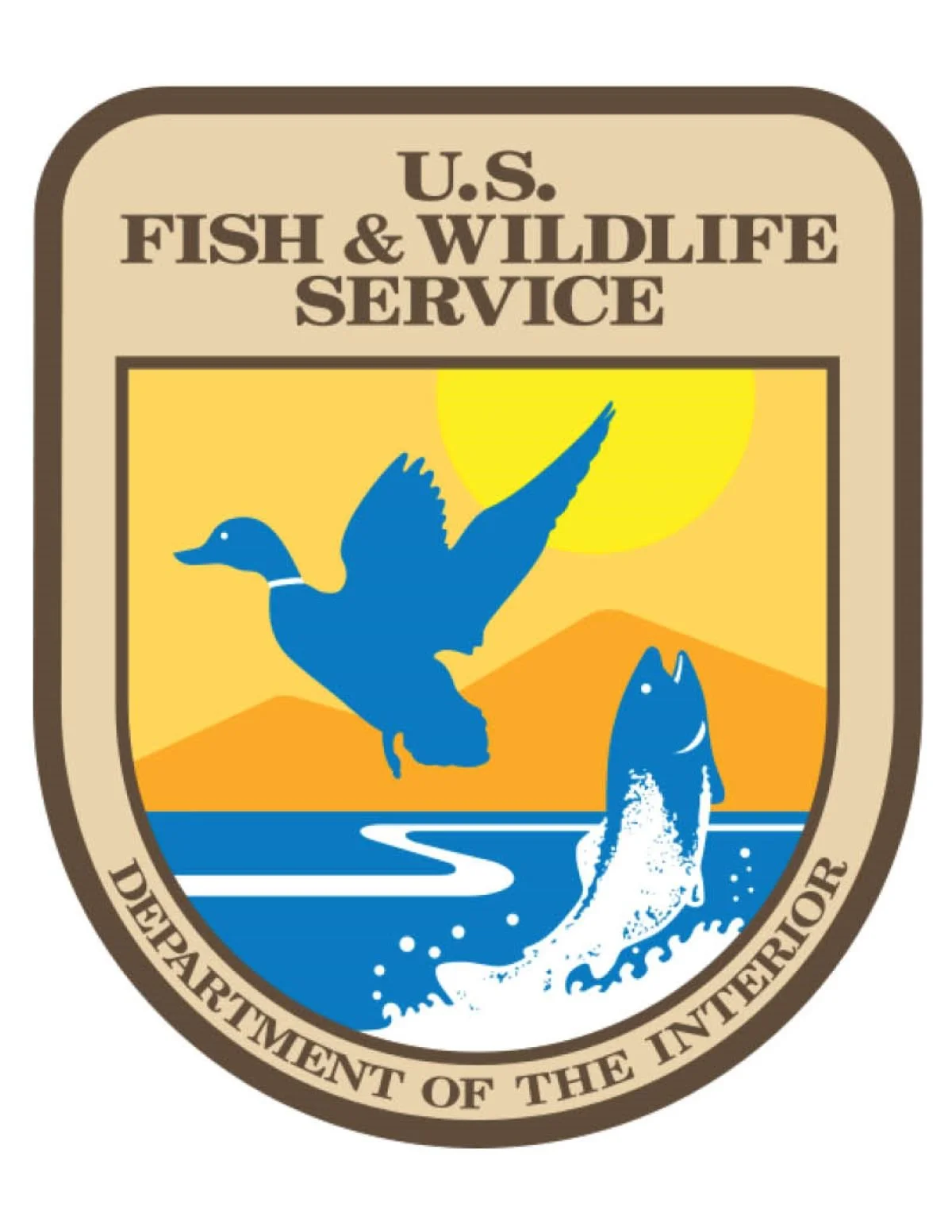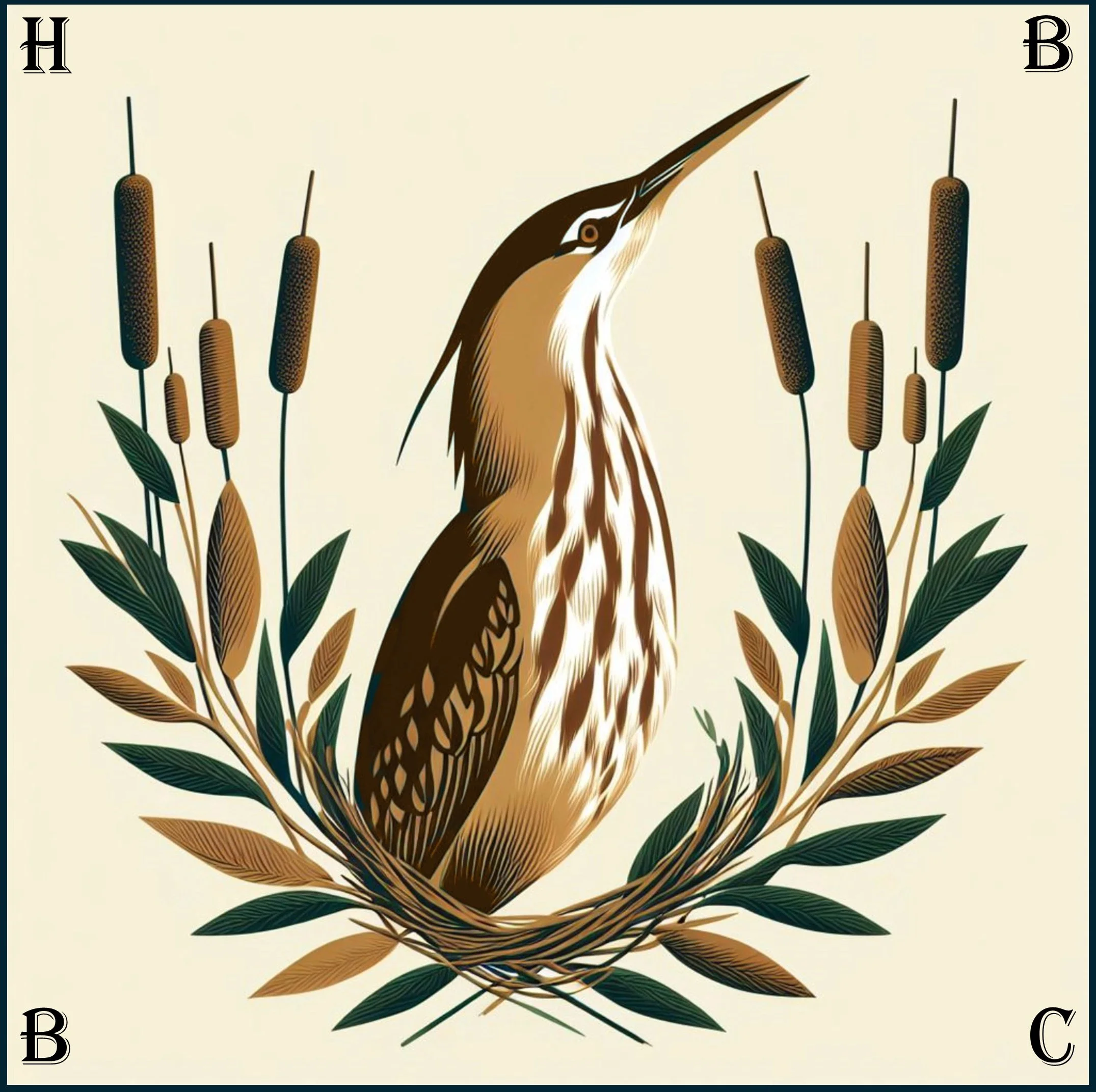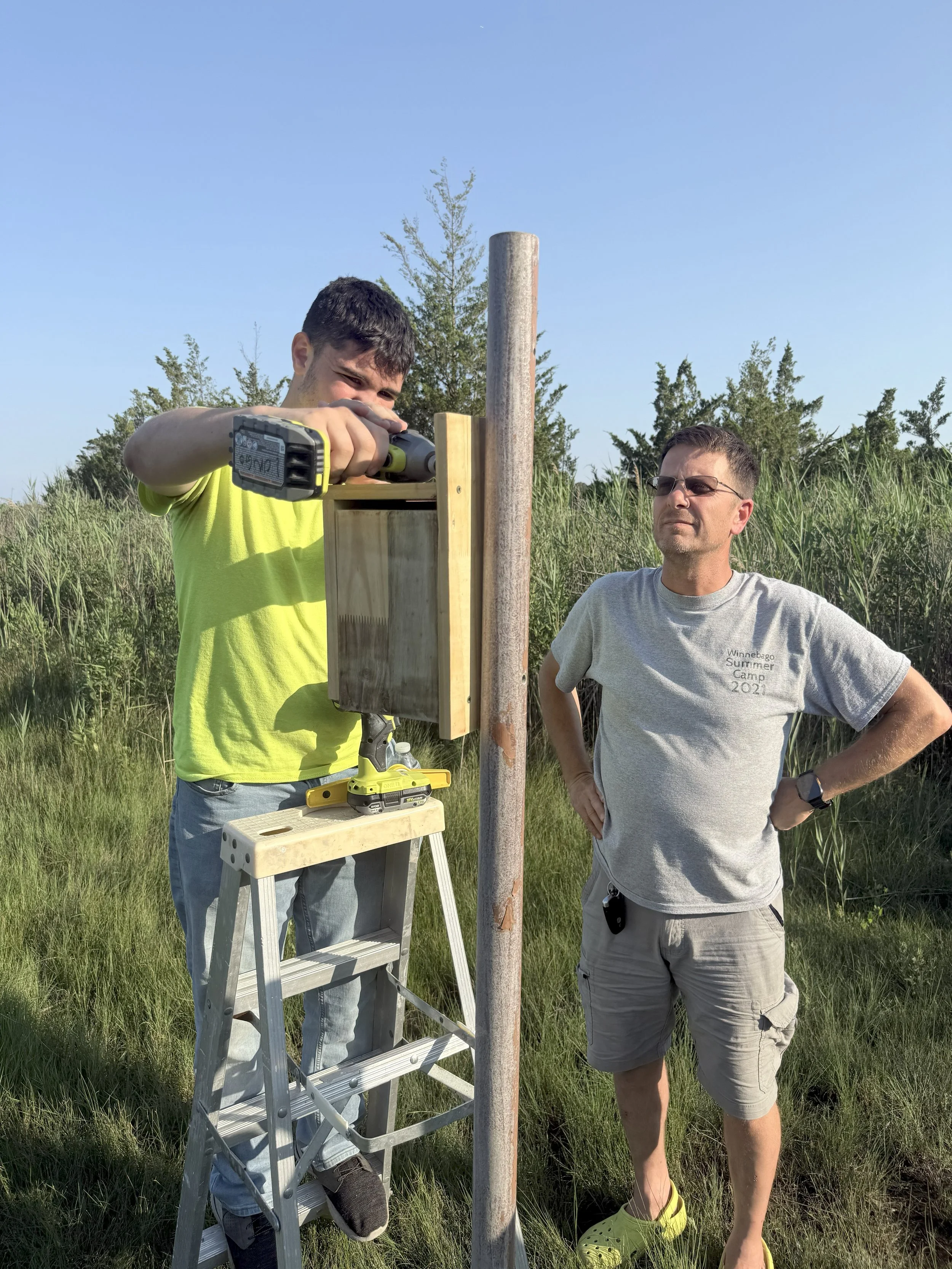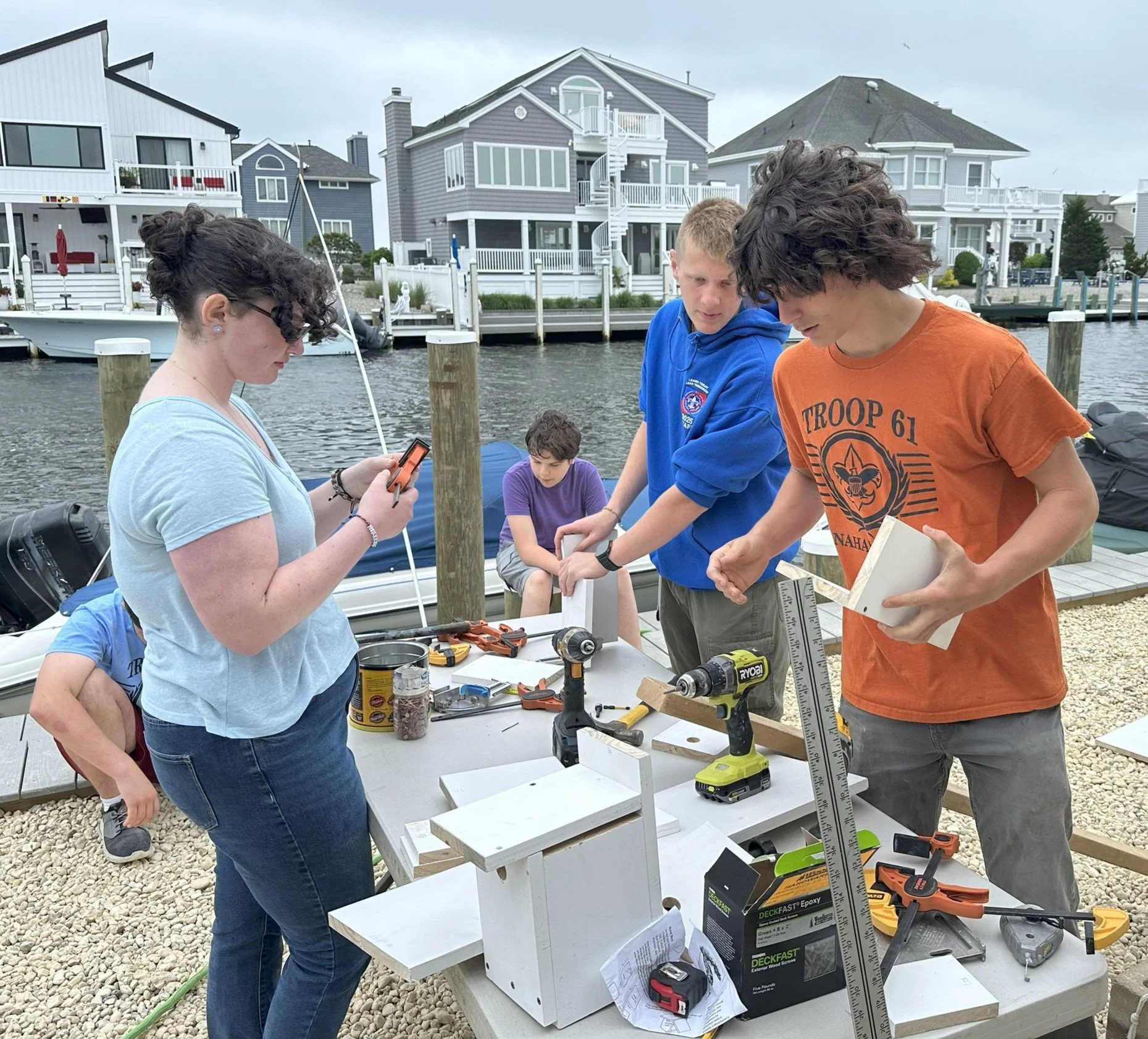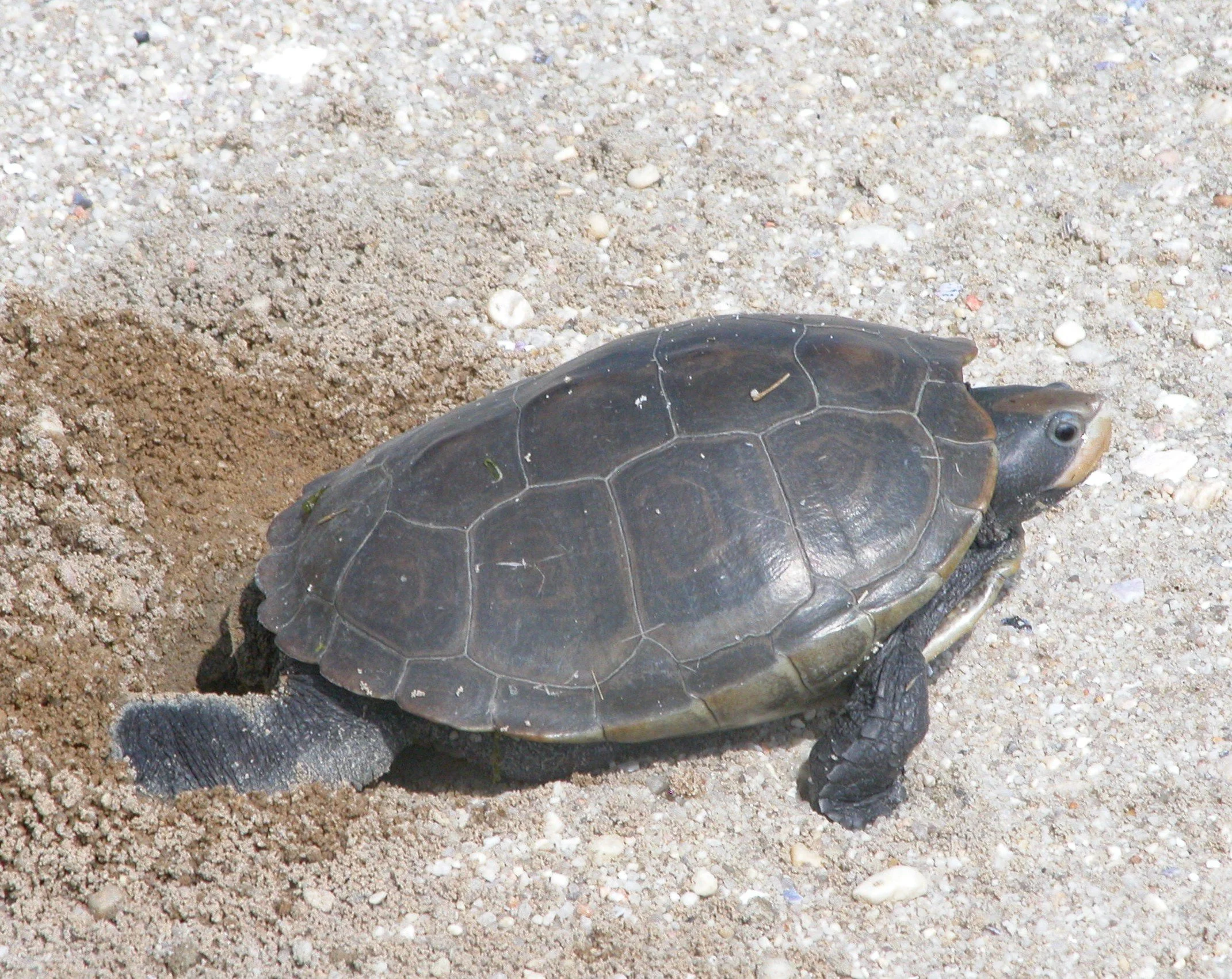
Partners & Projects
Our Partners
Living Shoreline Restoration Project - Ongoing
The Lighthouse Center is located along the western shoreline of Barnegat Bay, and encompasses 194 acres of diverse coastal habitats, such as maritime forest, mudflats, lagoons, fields, salt marshes, and a small artesian spring. The Lighthouse Center’s considerable marsh and shoreline has suffered extensive degradation over the past 50 years, predominantly due to historic mosquito control practices, sea level rise, significant climatic and storm surge events, and chronic boat wake action. During most recent times, the rate of degradation has increased. Along portions of the shoreline, the rate of soreline loss since 1995 has averaged approximately 4 feet per year. The degradation and loss of shoreline and marsh has also increased the Lighthouse Center’s vulnerability to severe storm events. The solution to this complex problem is the rejuvenation and re-establishment of resiliency to the unique ecological features of the land surrounding the Lighthouse Center, increased protection of the Lighthouse Center’s facilities, and support NREF’s continued purpose of environmental outreach, education, and research.
This project involves site assessments are continually conducted to evaluate key marsh health metrics such as vegetation, fauna, sediment, elevation, and water level. From these data, our team develops and implements designs for interior marsh restoration and marsh elevation through the reuse of local dredge material and restoring natural marsh hydrology with low-technology methods.
Partners and Sponsors: The Nature Conservancy; The New Jersey Department of Environmental Protection; Barnegat Bay Partnership; Marine Academy of Technology & Environmental Science; Save Barnegat Bay; Drexel University; Sovereign Consulting; Partnership for the Delaware Estuary.
Highlighted Conservation & Restoration Projects
Under the technical guidance of ecologist and NREF board member Jessica Druze, and with the assistance of NREF member Jim Boyd, local Scouts from Scouting America Troop 61 have installed new bird boxes throughout the wildlife preserve surrounding the Lighthouse Center for Natural Resource Education.
These bird boxes will provide native birds a home in an area where there is a shortage of ideal places to nest. Fifteen bird boxes were constructed and installed to benefit barn owls, wood ducks, eastern bluebirds, white-breasted nuthatches, and prothonotary warblers. The bird box specifications and placement follow the Cornell Lab of Ornithology NestWatch guidelines to meet the specific requirements of each species.
Special thanks to Eagle Scout Ethan Longo for dedicating his Eagle Scout Service Project to helping enhance native bird habitat at the Lighthouse Center.
Bird Box Installation - Summer 2025
Pollinator Meadow Project - Ongoing
A description of this project is not yet available. Check back soon!
Environmental Research Project Spotlight
Anthropogenic impacts on the reproductive ecology of the diamondback terrapin, Malaclemys terrapin
John P. Wnek, Ph.D.
Diamondback terrapins, Malaclemys terrapin, inhabit estuaries along the east and Gulf coasts of North America. One such estuary, Barnegat Bay, New Jersey, is considered one of the most anthropogenically altered estuaries in the United States. Barnegat Bay’s marsh and shoreline habitats have been filled with anthropogenically impacted substrate dredged from the bay floor, called dredged sediment. Terrapins use anthropogenically impacted areas for nesting that can negatively impact hatching success of terrapins. The introduction of non-native plants and structures (i.e., fences) shade nest sites, reducing nest temperature which affects the incubation duration and gender of terrapin embryos. This study investigated population sizes, hatching success, incubation duration of terrapin embryos in nests in different soil treatments including dredged substrate; and nests exposed to shade at North Sedge Island, Barnegat Bay. Microhabitat nest factors including: temperature, soil conductivity (SC), water potential, and gas composition in different soil types were studied. Our results indicated that freshly dredged substrate had the lowest water potential (MPa) and highest soil conductivity (mS/cm) than all other soil treatments with a100% embryo mortality with no embryonic development past the first stage of development. Nest temperatures at North Sedge Island were at the pivotal incubation temperature in non-shaded treatments and were below the pivotal temperature with 50% shade. Shading of nests caused significantly longer incubation durations and delayed emergence for terrapin embryos compared to non-shaded nests. Terrapin population estimates at N. Sedge Island indicated that 430 + 23 female terrapins utilize the island for nesting, and the earliest reproductive age of females on the island was six years. Increased body size and earlier age of maturity at N. Sedge Island may be a result of the area being located within a marine conservation zone, which has a large expanse of marsh, limited commercial operations, and ample estuarine food resources. This study showed that nest site conditions (i.e., soil texture, shading) are important for the success of diamondback terrapin populations. Effective management practices including the analysis of dredged substrate and washing it prior to its utilization to enhance or restore wildlife habitat are recommended based on the results of this study.








